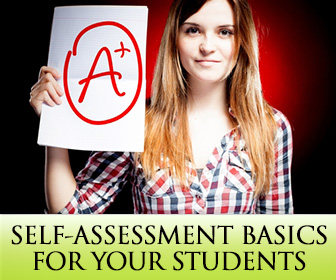6 Fantastic Ways to Use Sticky Notes in Reading Class


Having another quiz to create and copy, then grade, is exhausting to everyone in a classroom. How can you figure out what your students know without giving them an exam, though? You can do the traditional, quick check for understanding questions and activities before class ends like an exit ticket.

While these activities certainly have a place in a classroom to help you see if your students are following your lesson, what about letting your students tell you how well they believe they understand something? Providing them a space to do so and to write down their questions can spur them to take more ownership of their English education. It promotes metacognitive awareness that enhances students’ grasp of the English language. Self-assessment is a key component in student-led education.
Say you’re giving a new lesson on the use of the present perfect, and some of your students seem to really understand when it is appropriate to use the tense. You have asked them if they have any questions, and no one has raised his hand. They have done guided and independent practice with worksheets and a role play activity. Everyone seems to get it. Then, you give the test on the past perfect tense. The results are alarming. Only half of the class made at least an 80 percent on the test. What happened?
First, you should check that the exercises and instructions on the test were familiar in structure and form to what the students already know how to do. Did you give them any new directions to complete an exercise? Was the vocabulary or context for the test items too difficult?
If all these check out, next ask yourself if your presentation of material was as good as it could have been. Could the students have used some more practice with you guiding them? Did you give solid examples?
Before you present a review lesson to the students, create a way for students to let you know whether they think they understand the present perfect. A visual way to do this is to make a large poster to hang on the wall that allows students to self-assess their understanding. Use a red, yellow, and green piece of paper on the poster, stacked vertically in the order of a traffic light. Personally, I prefer to put green on top instead of red because green on top indicates students understand the material, and it is right at eye level.
Give students a sticky note or a small piece of paper with tape. Tell them to write their names on the sticky notes. At the end of class, they can put their sticky note with their names on the color that represents whether they understand the material. Green is “I got this!”; yellow is “I Kind of Get This”; red is “Huh?” As students leave class, they can put their sticky notes on the color that best represents how well they feel they understand the lesson.
You can make some tweaks to the above procedure and poster to fit your classroom. To decrease waste, for example, you can make laminated or cardstock name cards for all of your students. They can reuse them for each lesson. Put sticky Velcro strips on each color of the poster so they can just affix their name cards without tape or sticky notes.
If students have a question about the lesson, they can write it on their sticky notes and put them in the yellow section of the poster. If you choose to use Velcro on the back of the name cards, have a separate question box attached to the wall or on a shelf into which students can drop their questions they write on a piece of paper. If you prefer to allow anonymity in students’ self-assessment, just ask them to put markers without their names on the poster color that best represents how well they think they understand.
During your class’ break time or at the end of class, have students put their name cards, questions or markers up on the poster or in the question box. Quickly look through them. Students may have many of the same questions, or it may be that most people are having a difficult time understanding the material. This quick activity gives you insightful data about how well students believe they get what you are teaching.
In our example of poor test results on your lesson on present perfect, you might find that your students have questions about whether they can use the present perfect in a particular situation. This might explain why they missed so many questions on the test.
Self-assessment helps students focus their internal thinking on whether they understand the material you teach. It also helps them understand whether they feel comfortable applying the new language outside of class. It helps you gain a deeper understanding of how students feel about a lesson, and it is a quick and easy way to gather the information. Students can provide their information and questions anonymously, too, which can alleviate any potential embarrassment they may have about asking a question in class.
When you teach your class again on the present perfect, you will take your new knowledge about what the students know about the tense and how to use it. Your re-teaching will be more focused and targeted to exactly what the students need to know. You may combine this information with the discovery that the types of questions you asked on the test did not match the practice material in class.
Your next lesson and test are more in tune with the students’ learning needs in the moment, and you can be confident that you have become a better teacher through this process. Students, in turn, have a more solid comprehension of what they know and don’t, and they are more confident that they can use the present perfect correctly when they speak English.
This is a guest article written by Leyla Norman from http://www.empowerenglishtutoring.com